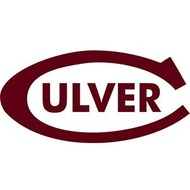
(View Complete Item Description)
This educational video features Sperm whales and has an accompanying lesson plan to teach about Sound in the Sea. The Sperm whale holds many records. It is the deepest-diving whale on Earth, the largest toothed whale on Earth and has the largest brain on the planet too. On top of that, it has a reputation for being a vicious beast, thanks in part to Herman Melville's Moby Dick. But the real Sperm whale is a lot different than people think. It has a highly-evolved social life, operates at depths where nobody can see them most of the time, and uses sonar which is so sophisticated that it makes the Navy's electronics look like toys. Sperm whales are very hard to find and even harder to film. In the Caribbean, Jonathan repeatedly attempts to get close to the elusive whales, until finally he succeeds and has an incredible experience eye to eye with a giant who investigates him with powerful sonar clicks. Please see the accompanying lesson plan for educational objectives, discussion points and classroom activities.
Material Type:
Activity/Lab,
Diagram/Illustration,
Lecture Notes,
Lesson Plan
Authors:
Jonathan Bird Productions,
Oceanic Research Group


















